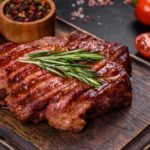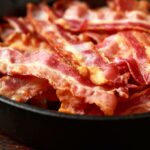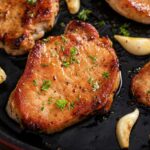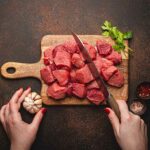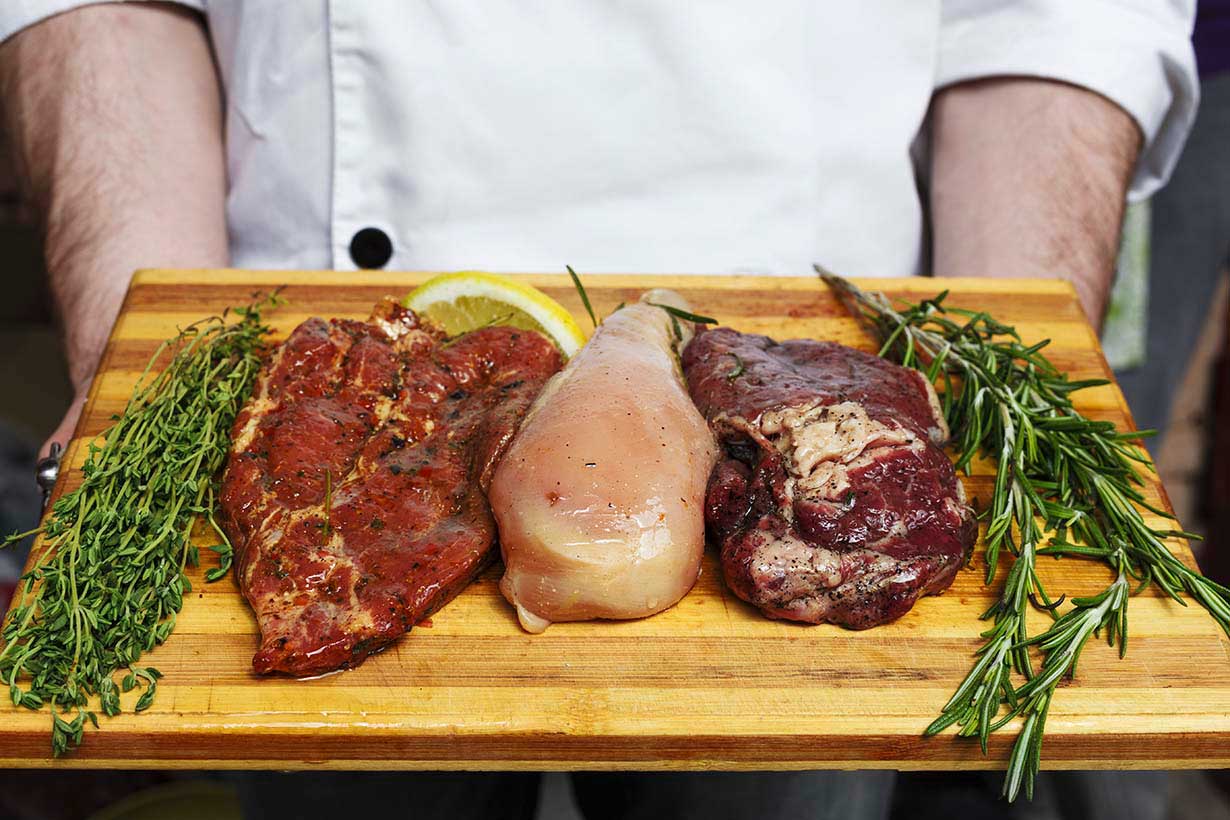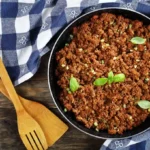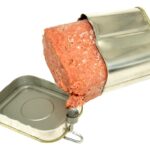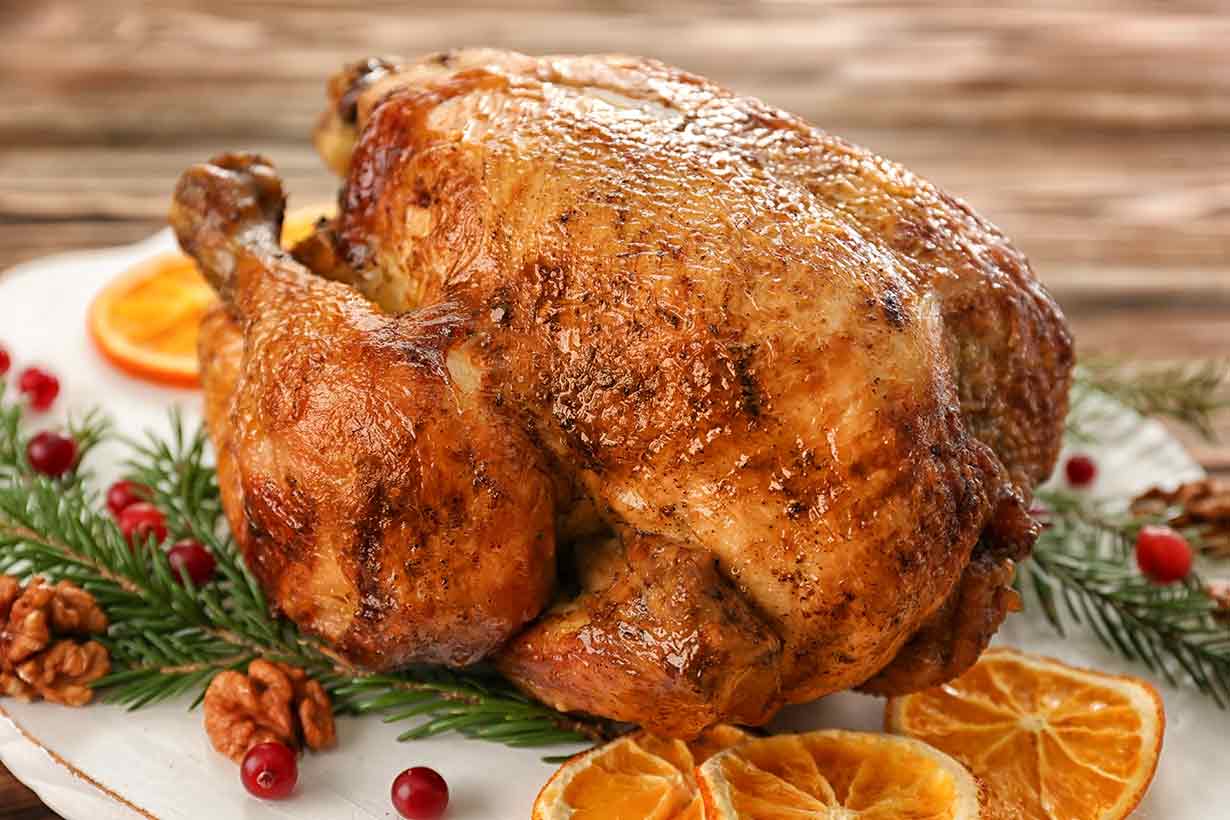Goose is a type of poultry that enjoys popularity around the world.
Although officially classed as ‘white meat,’ goose has the color of dark meat and looks more similar to beef.
This article looks at the nutrition properties and potential benefits of goose meat; is it a healthy choice?
What Is Goose?
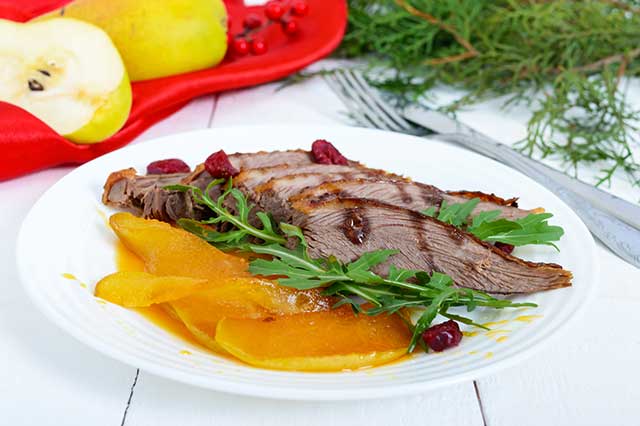
Goose refers to the meat of a large bird in the Anatidae family of birds.
While goose meat is not common in the United States and the United Kingdom, it is common throughout much of the world.
In fact, goose meat is the centerpiece Christmas dish in many European countries such as Germany.
Goose is also very popular in the Eastern part of the world, particularly in China and Hong Kong.
Taste
Goose meat is much more flavorful than other poultry such as chicken.
As a direct comparison, goose meat has a stronger flavor than the darkest parts of chicken meat.
Goose also contains a higher amount of fat than chicken, which adds to its delicious taste.
Rather than comparing goose to chicken and turkey, it is closer in flavor and appearance to red meat options.
Nutrition Facts
The following tables show the nutrition profile of goose meat per 100-gram (3.5 oz) serving raw (1, 2).
Data is from the USDA Food Composition Databases.
Calories and Macronutrients
With Skin
| Calories/Nutrient | Amount |
|---|---|
| Calories | 371 kcal |
| Carbohydrate | 0 g |
| Fat | 33.6 g |
| Saturated Fat | 9.8 g |
| Monounsaturated Fat | 17.8 g |
| Polyunsaturated Fat | 3.8 g |
| Omega-3 | 210 mg |
| Omega-6 | 3340 mg |
| Protein | 15.9 g |
Meat Only (No Skin)
| Calories/Nutrient | Amount |
|---|---|
| Calories | 161 kcal |
| Carbohydrate | 0 g |
| Fat | 7.1 g |
| Saturated Fat | 2.8 g |
| Monounsaturated Fat | 1.9 g |
| Polyunsaturated Fat | 0.9 g |
| Omega-3 | 100 mg |
| Omega-6 | 800 mg |
| Protein | 22.8 g |
Vitamins
With Skin
| Vitamin | Amount | % RDI |
|---|---|---|
| Vitamin B6 | 0.4 mcg | 20 % |
| Vitamin B3 | 3.6 mg | 18 % |
| Vitamin B2 | 0.2 mg | 14 % |
| Vitamin B5 | 1.3 mg | 13 % |
| Vitamin B1 | 0.1 mg | 6 % |
| Vitamin B12 | 0.3 mcg | 6 % |
| Vitamin A | 55.0 IU | 1 % |
| Folate | 4.0 mcg | 1 % |
Meat Only (No Skin)
| Vitamin | Amount | % RDI |
|---|---|---|
| Vitamin B6 | 0.6 mcg | 32 % |
| Vitamin B2 | 0.4 mg | 22 % |
| Vitamin B3 | 4.3 mg | 21 % |
| Vitamin B5 | 2.0 mg | 20 % |
| Vitamin B1 | 0.1 mg | 9 % |
| Folate | 31.0 mcg | 8 % |
| Vitamin B12 | 0.5 mcg | 8 % |
| Vitamin A | 40.0 IU | 1 % |
Note: goose meat is also a source of vitamin E, which can come in variable amounts. This data is missing from the USDA Food Composition Databases.
Minerals
With Skin
| Mineral | Amount | % RDI |
|---|---|---|
| Phosphorus | 234 mg | 23 % |
| Selenium | 14.4 mcg | 21 % |
| Iron | 2.5 mg | 14 % |
| Copper | 0.3 mg | 13 % |
| Zinc | 1.7 mg | 11 % |
| Potassium | 308 mg | 9 % |
| Magnesium | 18.0 mg | 5 % |
| Sodium | 73.0 mg | 3 % |
| Calcium | 12.0 mg | 1 % |
| Manganese | Trace | 1 % |
Meat Only (No Skin)
| Mineral | Amount | % RDI |
|---|---|---|
| Phosphorus | 312 mg | 31 % |
| Selenium | 16.8 mcg | 24 % |
| Zinc | 2.3 mg | 16 % |
| Copper | 0.3 mg | 15 % |
| Iron | 2.6 mg | 14 % |
| Potassium | 420 mg | 12 % |
| Magnesium | 24.0 mg | 6 % |
| Sodium | 87.0 mg | 4 % |
| Calcium | 13.0 mg | 1 % |
| Manganese | Trace | 1 % |
Benefits of Goose Meat
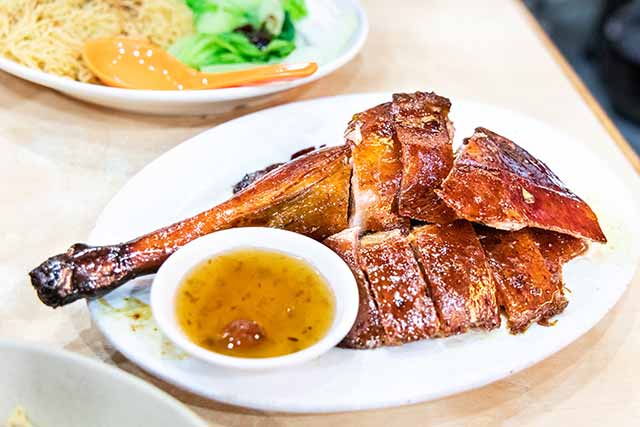
Similar to all meat, one of the best reasons to eat goose is for the protein content.
However, there are also some more unique benefits that goose offers.
Here is a summary of what goose offers.
1) High In Protein
First of all, the obvious benefit; goose is an excellent source of protein.
If you are going for protein density, then skinless goose meat provides an impressive 22.8 grams of protein per 100 grams (2).
Like all forms of poultry, goose provides a complete source of protein (sufficient levels of all the amino acids).
2) One of the Best Dietary Sources of Glycine
Glycine is a conditional amino acid that has several important benefits.
Additionally, glycine is the primary amino acid required for the synthesis of collagen (3).
Glycine has numerous important benefits for our body, and among these, it may (4, 5);
- Help to improve the management (and slow the progress) of osteoarthritis.
- Improve overall skin health.
- Reduce signs of aging such as skin wrinkles.
There is also evidence to suggest that maintaining a good ratio of glycine (found in animal skin and connective tissues) to methionine (found in muscle meat) may have health benefits.
For instance, research using rat models found that supplementing the rats with glycine increased lifespan by about 25% (6).
Goose meat (with skin) provides 1005 mg of glycine per 100 grams (1).
3) Usually Free-Range, Not Factory Farmed (More Omega-3)
Factory farming has grown rapidly over the past half-century.
At present, more than 70% of farm animals are raised in factory farms globally, and this figure jumps to 99% for US farm animals (7).
However, due to their space requirements and feeding habits, goose meat usually comes from birds allowed outdoors with access to fresh pasture.
Generally speaking, geese are excellent foragers, and they can source (most of) their own food, which cuts down on production costs (8, 9).
This fact makes goose meat an excellent choice for those who care about animal welfare.
Additionally, pasture-raised animals generally have a much better ratio of omega-6 to omega-3 fatty acids (10, 11).
4) A Good Source of Minerals
Goose meat provides a great source of minerals, and it is especially high in copper, iron, phosphorus, selenium, and zinc.
These minerals are all essential for different reasons, but iron and zinc are worth mentioning since many people do not have an adequate intake.
For example, more than 1.5 – 2 billion people (including certain population groups in the US) have an iron deficiency (12).
Furthermore, an estimated 17.3% of the world’s population is at risk of zinc deficiency (13).
The most concentrated mineral in goose meat is selenium. This mineral activates various antioxidant enzymes in the body (14).
5) Rich In B Vitamins (Especially Vitamin B6)
Goose meat supplies a significant amount of vitamin B6.
Skinless goose meat offers 32% of the RDI for this essential vitamin.
Vitamin B6 has various functions within the body, and it plays a significant role in protein metabolism (15).
Goose also contains a fair amount of the other B vitamins.
6) Can Be Nutrient-Dense
Skinless goose meat may not taste as good, but it is the winner when it comes to nutrient density.
Without the skin, goose meat only contains 161 calories per 100 grams (2).
For this 161 calories, the meat provides a good source of fat, protein, and a wide range of vitamins and minerals.
How To Cook Roast Goose
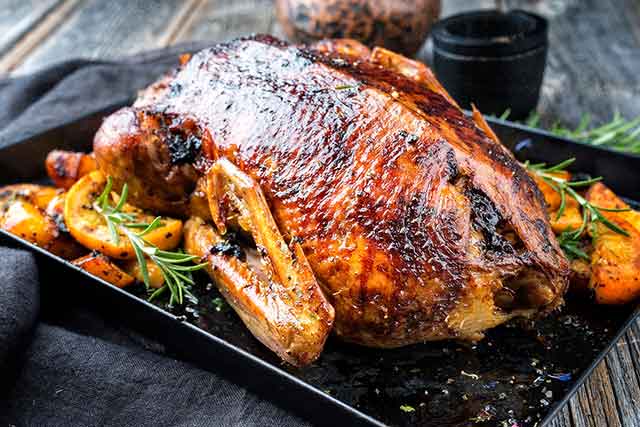
The most famous way of cooking goose is by making a roast.
While there are many different ways to do this, the following recipe is a tried and tested process.
Ingredients
- 1 goose
- 2 rashers of bacon
- 1 cup of mushrooms
- 2 lemons
- 1 large onion
- 10 cloves of garlic
- 1 bunch of sage
- 3 tsp salt
- 1 tsp black pepper
Method
- First, chop the onion and mushrooms into small pieces, mash the garlic cloves, and then add all three to a bowl.
- After this, chop the two lemons into small pieces (including the rinds) and mix them into the bowl.
- Add the sage, two of the teaspoons of salt, and pepper and mix everything well.
- Chop the two rashers of bacon into smaller pieces.
- Next, fry these ingredients in butter or olive oil in a skillet for 10-15 minutes.
- Finally, stuff the goose with all these ingredients. If you don’t know how to stuff a goose, then watch this video here.
- Rub the outside of the goose with butter, and sprinkle the remaining teaspoon of salt on top. Add black pepper to taste.
- Once ready, cook the goose in a pre-heated oven for approximately 2 hours at 180°C (356°F). Cook until the outside is a crisp golden brown.
Where To Buy Goose Meat
Goose meat can be harder to find than more traditional poultry options such as chicken or turkey.
However, some supermarkets/large grocery stores sell it.
If you can’t find goose in your local area, then a quick online search should bring up some local stockists.
There are also numerous online sources that will deliver.
Final Thoughts
While goose meat isn’t as popular as other poultry options, it is much more flavorful and quite nutritious too.
The meat is high in protein, vitamins, and minerals, and the skin is an excellent source of glycine.
Lastly, wild goose meat tastes much better than any regular chicken you’ll find in a market.
For more on poultry, see this guide to the benefits of duck meat.

